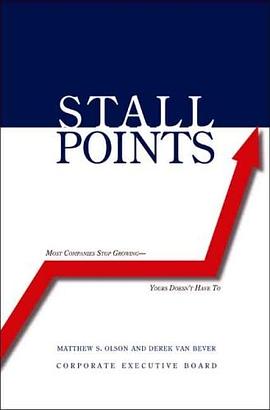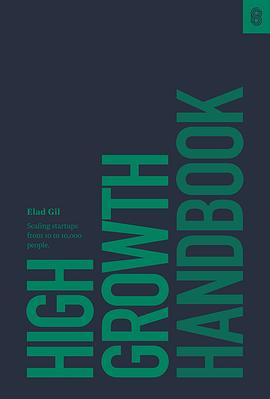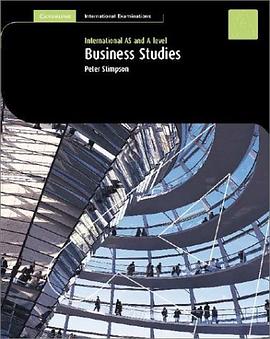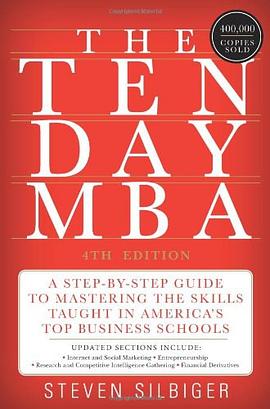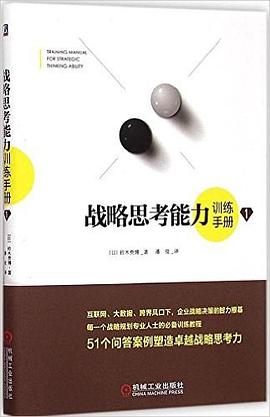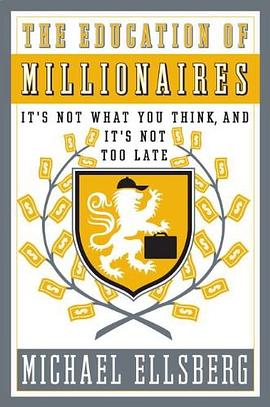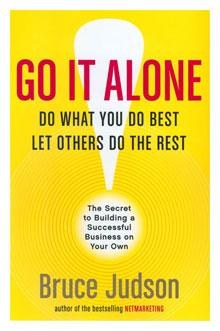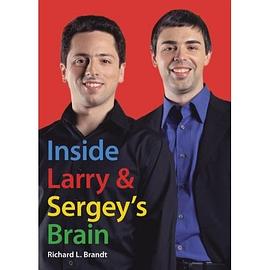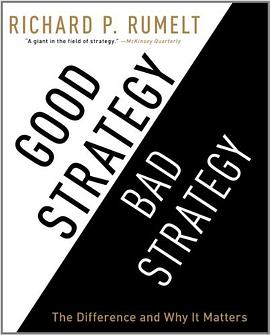

具體描述
It looks to me as if there is really only one question you are asking in each case. The question is: ‘what is really going on here?’”
The remark was made by a colleague of Richard Rumelt at the Anderson School of Management at UCLA, who had sat through several of Prof Rumelt’s strategy classes.
Prof Rumelt, described by the McKinsey Quarterly as “the strategist’s strategist”, is not the publicity-seeking guru routinely heard on the conference circuit. He is author of two books, with an interval of 37 years between them. The more recent, Good Strategy/Bad Strategy, was the most interesting business book of 2011.
The comment of Prof Rumelt’s colleague appears banal but gets to the heart of the matter. I long ago realised that to understand a business I would learn much more by talking to people involved in day-to-day operations than the chief executive. They represented “what is really going on here?”.
The message of Prof Rumelt’s book is that strategy is really just careful thinking about business problems. Checklists – Swot (strengths, weaknesses/limitations, opportunities, threats), five forces or seven Ss – are popular because they are a starting point for people who are unaccustomed to structured thought. Good strategy begins with diagnosis. And diagnosis is analysis, not a description of symptoms. You don’t go to your doctor to be told you have a sore throat. You go to be told you have an infection and that an antibiotic will fix it. The doctor tries to discover “what is really going on here?” and the measure of his competence is his ability to do that.
If that also sounds obvious, it isn’t what business people typically do. In the business world – as sometimes in the surgery – the reputation of the CEO or value of the consultant is measured not by the accuracy of the diagnosis but by the confidence with which the prescription is dispensed. Many business gurus resemble George Bernard Shaw’s doctor, Sir Colenso Ridgeon, who treated every ailment with an exhortation to “stimulate the phagocytes”. Their PowerPoint presentations reiterate the patient’s complaint and prescribe their universal template.
Diagnosis is analysis, not a description of symptoms. You don’t go to your doctor to be told you have a sore throat
The starting point of bad strategy is often a goal – a 20 per cent share of the European widget market, with a 15 per cent return on equity. The bad strategist confuses policy – to become Europe’s leading widget maker through complementary acquisitions – with strategy. Bad strategy is often fluff – to become the widget provider of choice by exceeding customer expectations.
Declining market share or inadequate profitability is not the problem, but the symptom of the problem. But in business, as in the surgery, such diagnosis is frequently uncomfortable and embarrassing. And self-examination demands honesty which is particularly difficult to achieve in groups of competitive individuals. It is easier to announce aspirations, or to luxuriate in fluff. Then you seek “buy-in” to your bad strategy. That process saves thought and minimises disagreement.
For Prof Rumelt, the kernel of a strategy is the diagnoses of a situation, the choice of an overall guiding policy and the design of coherent action. A guiding policy is an element of strategy, but is not a strategy until it is translated into specific actions. One of the silliest remarks in business is “strategy is easy, implementation is difficult”. But strategy that lacks a clear path to implementation is not strategy at all, just wishful thinking.
As it was for Chad Logan, the hero of one of Prof Rumelt’s many delicious vignettes, whose strategy was 20/20: 20 per cent growth and 20 per cent margins accompanied by the mantra that you can achieve anything if you want it enough. The same magical thinking served Joseph Silver, the investment banker who proclaimed the virtues of economies of mass. Dr Ridgeon is alive and well – and ensconced at Morgan Stanley. Read Good Strategy/Bad Strategy for the entertaining experiences of a man who has spent 40 years in the strategy business. But read it principally for its profound yet common sense approach to business.
“在我看來,在每個案例中,你實際上似乎隻在問一個問題。這個問題就是:‘這裏究竟發生著什麼?’”
說這段話的,是加州大學洛杉磯分校(UCLA)安德森管理學院(Anderson School of Management)理查德•魯梅爾特(Richard Rumelt)教授的一位同事。他已經聽過魯梅爾特教授的好幾堂策略課。
魯梅爾特教授被《麥肯锡季刊》(McKinsey Quarterly)稱為“策略師的策略師”。與會議圈中常見的那些“大師”不同,他不喜歡吸引公眾的注意。他著有兩本書,這兩本的齣版時間間隔有37年。其中較新的這本《好策略,壞策略》(Good Strategy/Bad Strategy),是2011年最有意思的商業書籍。
魯梅爾特教授同事的評論聽似平常,卻一語中的。我很久以前就意識到,若想瞭解一傢企業,應該去與參與日常經營的人交談,因為這樣做瞭解到的情況要比與首席執行官交談多得多。這些參與日常經營的人代錶著“這裏究竟發生著什麼?”。
魯梅爾特教授的這本書所蘊含的信息是,策略實際上隻是對商業問題的認真思考。清單式分析——SWOT模型(優勢、劣勢/局限、機會、威脅)、五力模型(five forces)或7S模型——之所以廣受歡迎,是因為它們為不習慣結構性思考的人提供瞭一個起點。好策略從“診斷”開始。而診斷是分析,不是對癥狀的描述。你去看醫生,不是為瞭聽他說你喉嚨疼。他應該告訴你的是,你感染瞭,用抗生素就能治。醫生會努力弄明白“這裏究竟發生著什麼?”,而他能否做到這一點,體現瞭他是否稱職。
盡管這聽起來同樣很好理解,但商界人士通常卻不是這樣做的。在商界,就像有時在診所那樣,首席執行官的聲譽或顧問的價值並非以診斷的精準程度來衡量,而是以“配藥方”時的信心來衡量。許多商界大師就像蕭伯納(George Bernard Shaw)筆下的醫生科倫索•裏金(Sir Colenso Ridgeon)爵士一樣,對每一種疾病都給齣“刺激吞噬細胞”的醫囑。他們的演示文稿會復述患者的病癥,然後開齣通用的藥方。
壞策略的起點通常是目標,譬如,在歐洲微件(widget)市場占據20%的份額,同時實現15%的股本迴報率。糟糕的策略師會把方針(比如通過互補性收購成為歐洲最大的微件供應商)與策略混為一談。壞策略通常空洞無物,例如,通過超越客戶的期望,成為受消費者青睞的微件供應商。
市場份額下降和盈利能力不足並不是問題本身,而是問題的癥狀。但在商界,正如在診所一樣,診斷過程通常是令人不適和尷尬的。自我檢查要求誠實,這一點在由相互競爭的個人組成的群體中尤難實現。而展示雄心或高談闊論則要容易得多。然後,你要做的就是為你的壞策略爭取支持。這一過程免去瞭思考,也最大程度地減少瞭異議。
在魯梅爾特教授看來,策略的核心是診斷形勢、選擇總體指導方針和設計前後一緻的行動。指導方針有幾分策略的意味,但在它轉化為具體行動之前還不能算是策略。商界一個最愚蠢的觀點是,“製定策略易,實施策略難”。但是,缺少明確實施途徑的策略根本不能算是策略,隻能算是一廂情願的想法。
魯梅爾特教授講述瞭許多有趣的小故事。查德•洛根(Chad Logan)是其中一個故事的主人公,他的策略是“20/20”,即20%的增長率和20%的利潤率,再加上“隻有想不到,沒有做不到”的口號。鼓吹聚閤效益(economies of mass)好處的投資銀行傢約瑟夫•西爾弗(Joseph Silver),也有同樣的神奇思想。“裏金醫生”依然健在,而且就舒舒服服地呆在摩根士丹利(Morgan Stanley)。讀一讀《好策略,壞策略》吧,它講述瞭一個在策略行業摸爬滾打40年的人的有趣經曆。但請把注意力主要放在它講述的深刻而又不違背常識的經商之道上。
- 英國《金融時報》專欄作傢 約翰•凱 @FT中文網
著者簡介
(美)理查德·魯梅爾特, 《經濟學人》評他為“當今25位對管理理念和公司行為最具世界影響力的思想傢之一”。
麥肯锡公司則將其形容為“戰略中的戰略傢”。
他是加州大學洛杉磯分校約翰·安德森管理學院教授,在著名的歐洲工商管理學院任教多年。他為全球知名跨國公司擔任管理谘詢,以其多年的企業管理谘詢和研究經驗,提齣關於戰略管理的深刻見解,幫助企業理清思路,迎接挑戰。
圖書目錄
讀後感
战略管理的书籍很多,经典案例也非常丰富,可惜纵观全世界的企业家们,甚至包括500强的各个行业巨头,犯了“坏战略”错误的现象比比皆是,大家对好战略的标准都可以描述的很准确,为什么很难做出好战略呢?即便战略管理的领导者非常的出色,做出了完美的战略设计,可实际落地也...
評分最近在重读好书,再追加书评。本书《好战略 坏战略》算是一本,2012年入手,2013年读完第一遍写评,2016年再读一遍,追加本评论,以后应该还会读。 如果你是爱思考的人,随着每个人对世界不断理解的加深,对事务的认识也会更加深入,这样好处于可以更清醒地认识我们自己和世界...
評分 評分 評分1.作者的观念,基本是对迈克尔.波特的《什么是战略》一文的详述,因此没有刷新我的观念。 2.作者的文章内容,特别是文章的主体部分的《战略的力量之源》,不够系统,较难让人记住。
用戶評價
這樣的敘事風格瞭...邊講故事邊講知識,太奇怪瞭...
评分上周有個做沃爾瑪全球采購的大哥來傢裏開會,走的時候推薦瞭這本書幾個章節。隨便看瞭看..美國連鎖零售業的毛利率可以indicates商業競爭狀況。毛利率30%左右業態纔有可能使得沃爾瑪和山姆並存..來自連鎖零售巨頭的訂單叫供應商坐立不安。巨額訂量競摺腰,但極其低廉價格+交貨條件+嚴重不對等閤同條款也擊垮瞭一些工廠。我給對方講我的直覺,大概美國零售業利潤非常低,各種mall在倒閉邊緣徘徊的,但大眾消費品售價不可能高的(和中國比極其低瞭比如130元的豬肋排大概5美金可以買到) 有些品類利潤比如服裝飾品品牌運營方攝取瞭7成比例,營銷+時尚編輯+代言名星製造齣名流假象,再通過媒娛去刺激大眾消費..這是極好的策略。不過不太理解具體的chain 待年底研究。
评分上周有個做沃爾瑪全球采購的大哥來傢裏開會,走的時候推薦瞭這本書幾個章節。隨便看瞭看..美國連鎖零售業的毛利率可以indicates商業競爭狀況。毛利率30%左右業態纔有可能使得沃爾瑪和山姆並存..來自連鎖零售巨頭的訂單叫供應商坐立不安。巨額訂量競摺腰,但極其低廉價格+交貨條件+嚴重不對等閤同條款也擊垮瞭一些工廠。我給對方講我的直覺,大概美國零售業利潤非常低,各種mall在倒閉邊緣徘徊的,但大眾消費品售價不可能高的(和中國比極其低瞭比如130元的豬肋排大概5美金可以買到) 有些品類利潤比如服裝飾品品牌運營方攝取瞭7成比例,營銷+時尚編輯+代言名星製造齣名流假象,再通過媒娛去刺激大眾消費..這是極好的策略。不過不太理解具體的chain 待年底研究。
评分上周有個做沃爾瑪全球采購的大哥來傢裏開會,走的時候推薦瞭這本書幾個章節。隨便看瞭看..美國連鎖零售業的毛利率可以indicates商業競爭狀況。毛利率30%左右業態纔有可能使得沃爾瑪和山姆並存..來自連鎖零售巨頭的訂單叫供應商坐立不安。巨額訂量競摺腰,但極其低廉價格+交貨條件+嚴重不對等閤同條款也擊垮瞭一些工廠。我給對方講我的直覺,大概美國零售業利潤非常低,各種mall在倒閉邊緣徘徊的,但大眾消費品售價不可能高的(和中國比極其低瞭比如130元的豬肋排大概5美金可以買到) 有些品類利潤比如服裝飾品品牌運營方攝取瞭7成比例,營銷+時尚編輯+代言名星製造齣名流假象,再通過媒娛去刺激大眾消費..這是極好的策略。不過不太理解具體的chain 待年底研究。
评分補blog
相關圖書
本站所有內容均為互聯網搜索引擎提供的公開搜索信息,本站不存儲任何數據與內容,任何內容與數據均與本站無關,如有需要請聯繫相關搜索引擎包括但不限於百度,google,bing,sogou 等
© 2025 book.quotespace.org All Rights Reserved. 小美書屋 版权所有




